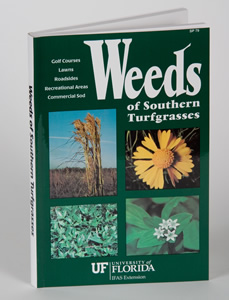
by Taylor Vandiver | Aug 3, 2015
As our world and our lives become more centered on technology it seems that all the information we need is just a touch screen away. After all, you are most likely reading this article from a laptop, smart phone, or tablet. While convenient and portable, there are some places you might not wish to take your electronics and one of those places is in the garden. You may say, “Well Taylor, that’s what they make waterproof, shatterproof, dirt proof, etc. cases for!” and I would say that you’re right. However, technology has many limiting factors such as battery life and screen glare. Now believe me, I am by no means disparaging technology! I come from a generation that considers Wi-Fi as necessary as water and an outlet comparable to oxygen. But there is something to be said for having a book in hand when out in the garden. For one thing your neighbors won’t worry about you as they see you march around the garden with your phone in the air doing the “No Signal Dance”. Also, a book is great to have in order for you to jot down any notes or reflections. I would like to list for you a few books that I often reference when I receive calls from homeowners. These books will cover various topics and all of them can be found on the UF/IFAS Bookstore website, the links for each can be found below. If you have any questions contact your local Extension Office and, as always, feel free to contact me and I can give you a rundown on my collection of favorite reference books!
- New to the UF/IFAS bookstore: “Trees: North & Central Florida” a field guide to 140 common tree species. This sturdy, pocket-sized field guide–the only one of its kind for north and central Florida–is designed for landscape professionals, arborists, naturalists, gardeners, and anyone seeking to know the trees around them. Full color photographs of leaves, bark, flowers and full trees, together with clear descriptions and other information make identifying trees easier than ever. This book also features a handy diagnostic key, an introduction to plant parts, a glossary and a ruler to guide you, whether you’re a trained botanist or a complete beginner.
- “Poisonous Plants of the Southern United States” John W. Everest, Thomas A. Powe, Jr., and John D. Freeman (of Auburn University). Identification of common poisonous plants found along fence lines and in pastures in the Southern United States.
- “Weeds of Southern Turfgrasses” This practical weed identification guide contains 427 color photographs of 193 weed species, their geographical range, and life cycle descriptions. Includes a glossary of taxonomic terms and index of common and scientific names.

- “Disorders and Diseases of Ornamental Palms” Recently revised and updated, this ID deck is a diagnostic tool for landscape professionals and backyard hobbyists. The color photographs and explanatory text helps users identify and distinguish between the nutritional deficiencies, physiological disorders and common diseases of ornamental palms. All palms in the U.S. suffer from disorders and diseases, and identifying the differences can be tricky. These cards feature photographs and descriptions and are cross-referenced for easy comparison between different symptoms and the potential problems causing them. Includes a table of contents and 55 laminated, ring-bound cards.
- “Florida Lawn Handbook: Best Management Practices for Your Home Lawn in Florida” Written in practical language by turfgrass experts, this highly-anticipated new edition offers the most current lawn management information. Color plates identify various grass types, weeds, diseases, and insects—including those that are good for your lawn! Chapters cover selection, establishment, and maintenance for each type of lawn; soil analysis and fertilization; yearly calendars for lawn care and culture; mowing, watering, and calibrating sprinkler systems and fertilizer spreaders; overseeding for winter color; preparing a lawn for drought and low temperatures; safe pesticide application and use; the latest integrated pest management strategies; organic lawn care; and complete, illustrated diagnostic information for weeds, diseases, insect problems, nematodes, and other pests.
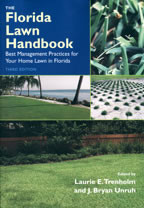
- “Sustainable Gardening for Florida” Gardeners today face a unique challenge: how do you create a beautiful, thriving landscape without over-use of fertilizers, pesticides, and water? Sustainable Gardening for Florida might be the first place to look for answers. This book provides interesting, money-saving ideas to reduce your ecological footprint. It includes chapters on composting and mulching, integrated pest management, water-wise irrigation and rainwater harvesting, preparing your garden for disasters, and all aspects of managing meadows, lawns, trees and shrubs, edible gardens, rain gardens and waterfront gardening.
- “Vegetable Gardening in Florida” From James Stephens, the founder of the Florida Master Gardener Program, this is the one resource you need to successfully grow vegetables in Florida. Whether you’re growing beans, tomatoes, herbs, or any other Florida crop, this guide will take you from site selection and insect management through the harvest and storage of your produce. Useful planting guides, gardening measurement conversions, and organic gardening information are accented with full-color throughout.
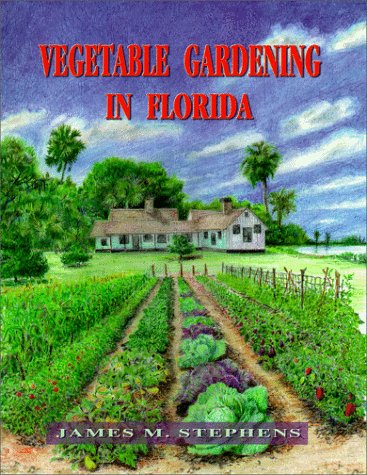
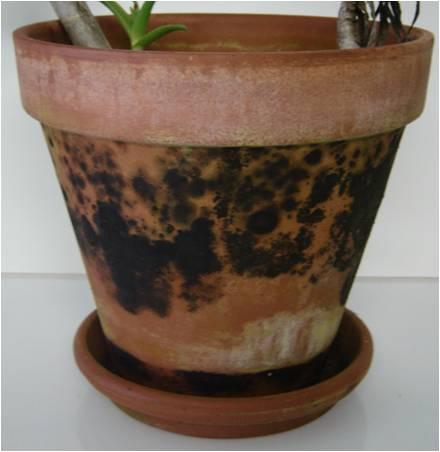
by Alex Bolques | Jul 28, 2015
Most likely, we all have them-garden pots. These typically are made of plastic, clay or wood. Garden pots should be sanitized if they were previously used or if they exhibit signs of mold or fungal growth. Whether they are used as garden boxes, planters, or hanging baskets, the surfaces of garden pots can harbor disease organisms, along with unsightly stains and mineral salts deposits. Salts from hard water and fertilizers can leach though clay pots leaving a white film on the pot’s outer surface. Salts accumulation can become flaky and encrusted around the rim and drainage holes of plastic and clay containers.

Mold or fungal growth on an unglazed terra-cotta (clay) pot Photo Credits: Alex Bolques, FAMU Research
To clean clay or plastic containers, use a brush or fine steel wool to remove dirt and debris and wash with a liquid soap detergent. If stains persist, consider using a 50:50 solution of water and vinegar. To sterilize clay or plastic pots, soak them in a mild solution of bleach, 1:10 bleach to water, for about 30 minutes. Then, immerse them in clean water and allow them to dry completely. Containers made of wood are different. If the timber that they are made of is not treated properly, they tend to rot and can harbor disease spores or bacteria. It is best to replace these as they show signs of wear or deterioration. Sanitizing your garden pots will help you avoid unwanted disease problems and unsightly garden container pots.
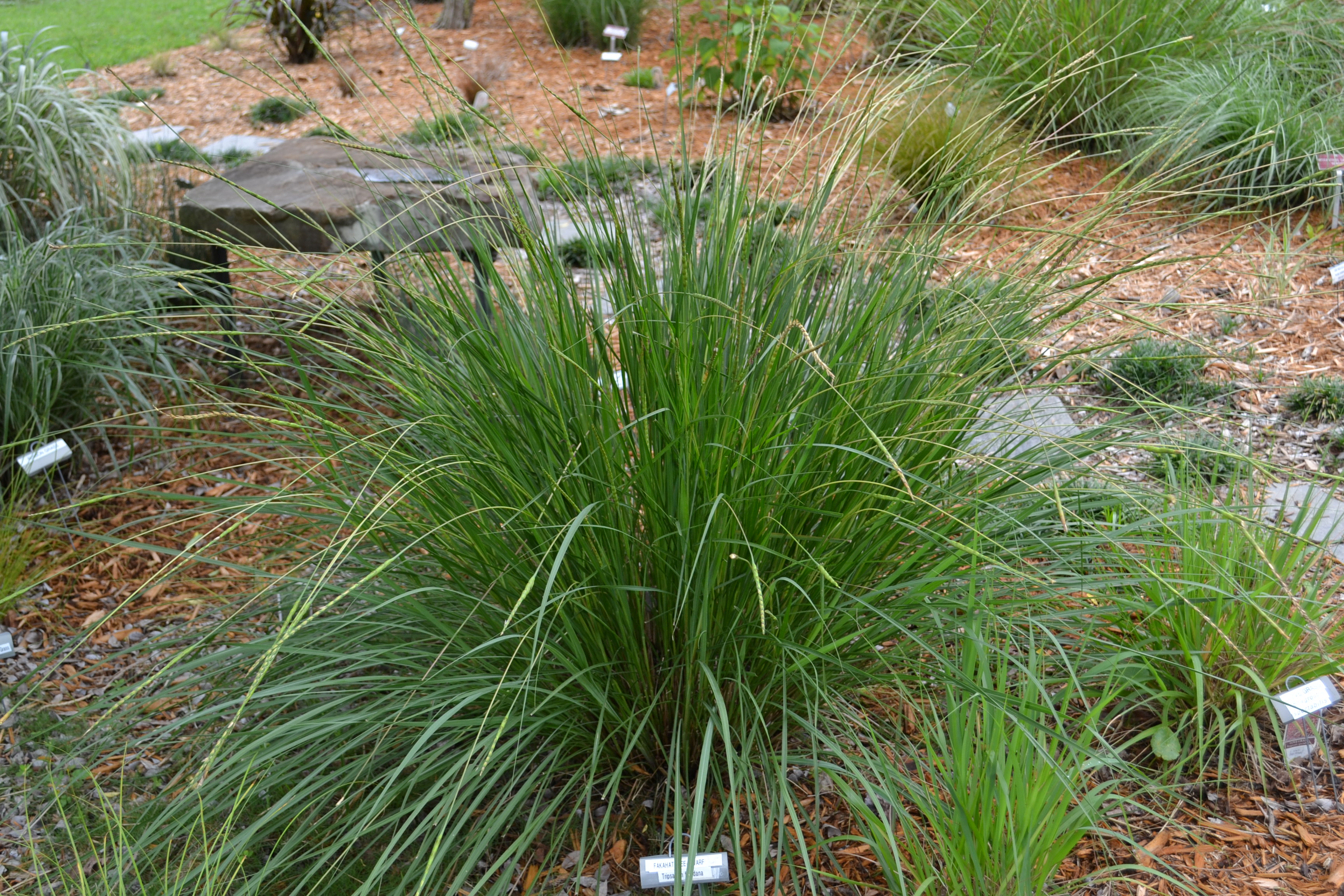
by Beth Bolles | Jul 20, 2015
Native plants can more readily be found in local nurseries to enhance landscape plantings. Not all natives are suited to every habit so it is still important to match the plant’s requirements with a suitable area in the landscape.
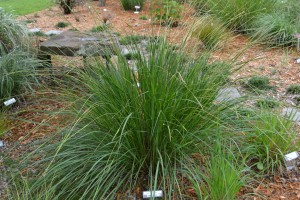
One low maintenance native that is more suited to a specific area is the landscape is the Gamma or Fakahatchee grass (Tripsacum dactyloides and T. floridana). This clumping perennial grass grows best in moist or even boggy soils. It has attractive green foliage and upright flower stems that appear in mid summer. Although the flowers are not very significant, they do have a red color when viewed up close.
The Eastern gamma grass can grow five feet in height so many gardeners prefer the dwarf version that reaches about 2-3 feet in height. Plant in areas of full sun or partial shade as a specimen plant or use in a mass of three or five.
In areas that receive colder temperatures, gamma grass can add fall interest to the garden. Leaves will change to a shade of red with first frost and plants can die back to the ground during freezing winters. New growth returns in the spring. Basic maintenance includes pruning back in the spring.
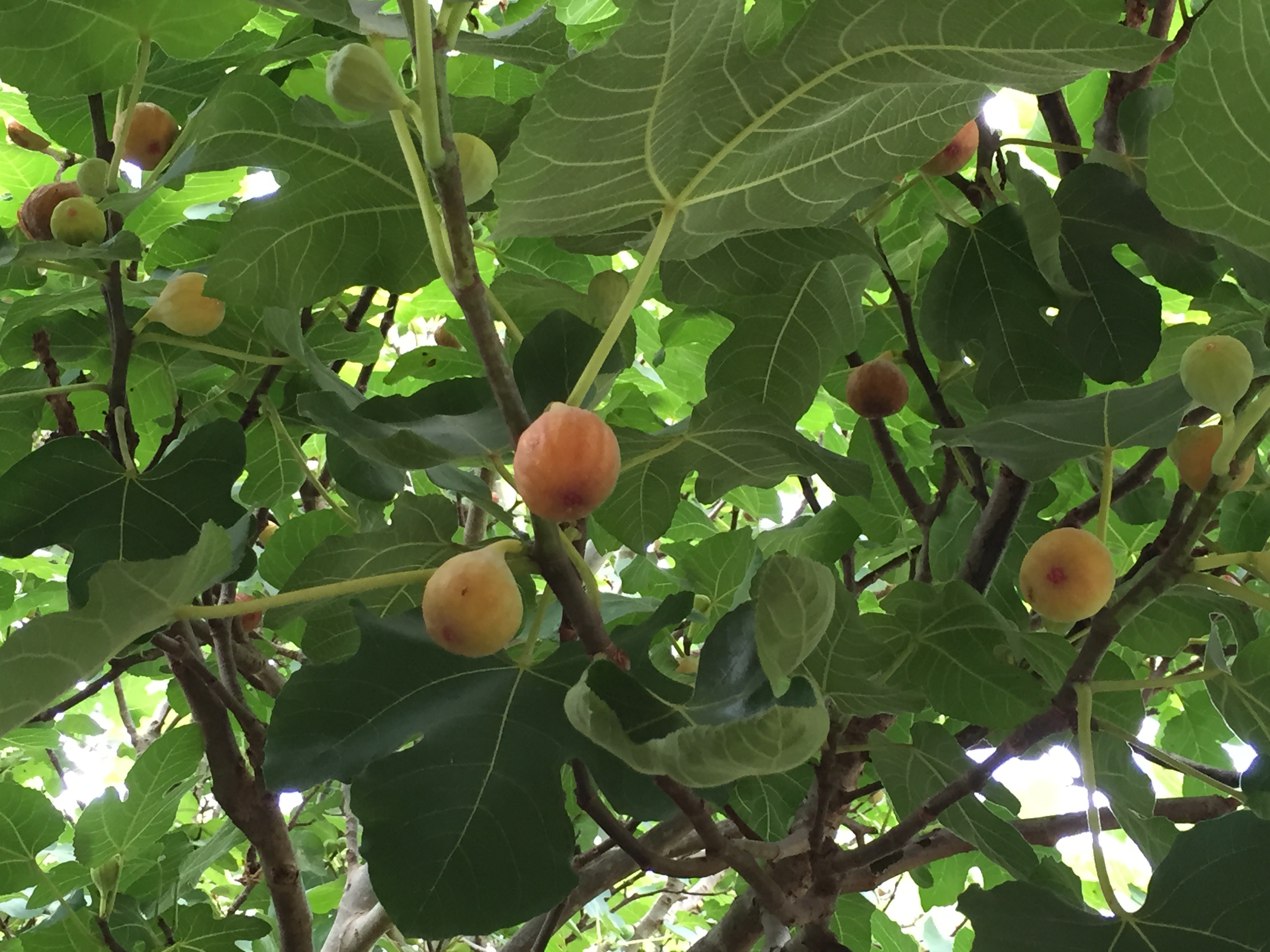
by Mary Salinas | Jul 20, 2015
July always brings the blessing of abundant figs on my trees. A new crop waits to be picked and enjoyed every day for nearly a month. The tender sweet fruit can be enjoyed fresh, prepared into jams or used in a myriad of recipes.
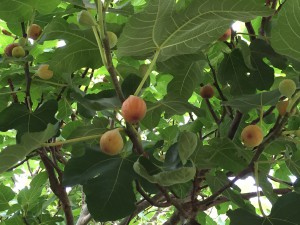
Ripe figs ready to pick. Photo credit: Mary Derrick, UF/IFAS Extension.
The fig (Ficus carica) is native to Asia Minor and the Mediterranean regions of the world and has been cultivated for an estimated 7,000 years. Spanish explorers brought the fig with them to Florida in 1575 and it has had a presence here ever since. Since the fig is adapted to a dry climate in its native regions, the humidity it encountered in Florida can cause fruit to split; but new cultivars have been developed to minimize this problem.
Fig trees usually grow to a maximum of 25 feet and have large bright green leaves that fall in the autumn. Fruit develops from June to August, depending on the chosen cultivar.
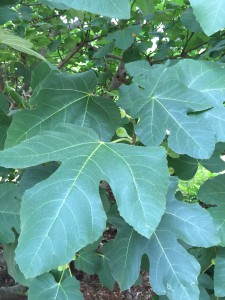
The large fig leaves are quite ornamental. Photo credit: Mary Derrick, UF/IFAS Extension.
Choose a spot for planting a fig tree that receives full sun and good drainage. Once established, figs are drought tolerant and only need supplemental irrigation if we have an extended drought. No structural pruning is required but you can prune to keep the tree from growing so tall that you cannot pick the delicious fruit. Be sure to do your pruning just after the fruit is gone as the fruit develops on the terminal ends of the branches from last year’s growth.
Many figs grow and fruit sufficiently without applied fertilizer, however, a light fertilization with a 10-10-10 with micronutrients can be helpful for small trees getting established and those with reduced fruiting. Young trees can benefit from a ½ pound three to five times from February to August while large trees could use up to 4 pounds per application on the same schedule.
There are a few pests that do damage figs; the most common, though, are the birds and squirrels that get the fruit before you do. Seldom do figs need to be sprayed when grown in the home garden.
For more information:
The Fig
Fig nutrition facts and recipes
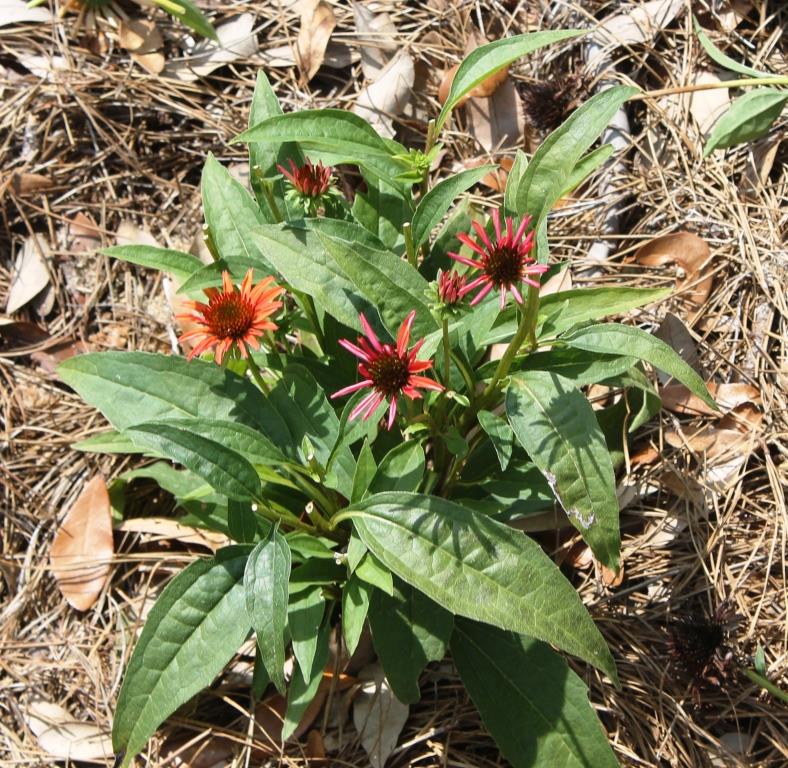
by Matthew Orwat | Jul 15, 2015

Coneflower, after deadheading, with new growth and flowers. Photo Credit Matthew Orwat, UF/IFAS Extension
During these “dog days”, full of hot temperatures punctuated with intermittent rain, gardeners can lose the motivation to get out there and get things done. One task, deadheading, can make a huge difference in the appearance of one’s landscape without a whole lot of effort.
The act of deadheading is the removal of individual blooms or flowering stalks that are past their prime. When deadheading, always trim the stem to an area above a node. The node can be determined by the presence of a leaf and its attachment to a stem. This area is known as the leaf axle.
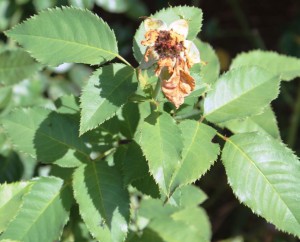
Roses before and after deadheading Photo Credit Matthew Orwat, UF/IFAS Extension
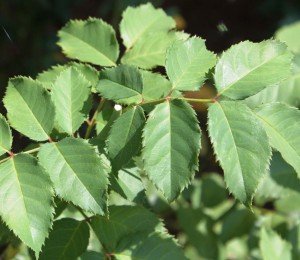
Roses before and after deadheading Photo Credit Matthew Orwat, UF/IFAS Extension
The main benefit of deadheading flowering shrubs and perennials, particularly in the spring and summer, is that removal of spent flowers promotes new growth and more flowers. It also eliminates unsightly seed stalks and decaying petals from the landscape. If trying to save seed or promote re-seeding, do not deadhead in the fall or near the terminal side of a given season for any plant.
Once proper deadheading is performed, new growth will emerge from the trimmed area. Oftentimes, this new growth is another single flower or flower cluster.
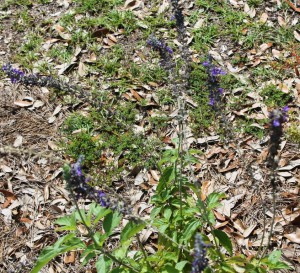
Salvia, before and after deadheading Photo Credit Matthew Orwat, UF/IFAS Extension
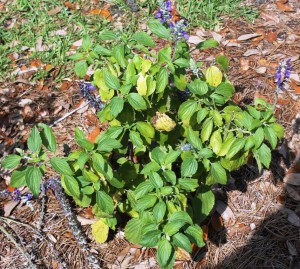
While this process is generally used for repeat flowering shrubs, such as roses, it can also be used effectively on crapemyrtle, salvia, cone flower, coreopsis, and many others.
Promote an extended bloom season in the garden and deadhead!
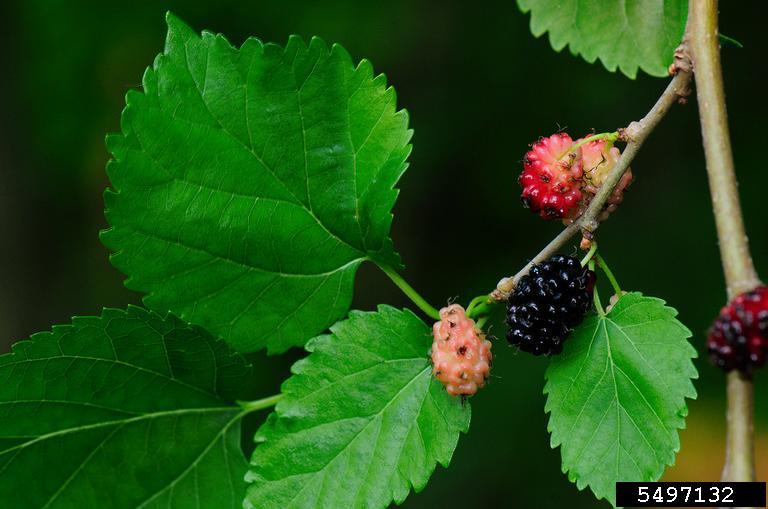
by Larry Williams | Jul 7, 2015
There are a number of plants in my landscape that bring back fond memories – plants that I propagated.
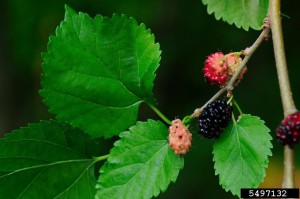
Red Mulberry. Photo credit: Vern Williams, Indiana University, bugwood.org.
There’s a mulberry tree in my backyard that I rooted years ago. I took the cuttings from an old mulberry tree in my hometown. As a boy, I climbed the tree, got in trouble once for coming home with mulberry stains on my clothes. I liked the berries and still do. I have good childhood memories about the tree.
About twenty years ago I visited the property adjacent to my childhood home. The tree was still there. It was during mulberry season. I enjoyed a few mulberries. I took about eight or ten cuttings from the tree. About a year after my visit, the property sold. The new owner bulldozed the tree.
But because of the cuttings that I rooted, the tree still lives and not just in my memory. The trees produced by those cuttings are genetically the same as the parent tree. Essentially, they are clones. The one in my backyard produces mulberries each year.
You too can propagate memories. Not all plants can be propagated from cuttings but many can be. Sometimes trial and error is necessary to learn proper timing in taking cuttings. But most reliable references will provide the time of year to take cuttings based on the plant species.
Stem cuttings should be removed from the parent plant with a clean, sharp knife or pruner. Ideally your cutting should be 4-6 inches in length and not much thicker than a pencil in diameter.
Take the bottom two-thirds of leaves off on each cutting. The cuttings should be stuck upright in a propagation medium. I usually use a good quality potting mix and mix in a little course sand or perlite for better drainage. The cuttings should be inserted deep enough to hold them upright, usually ½ to 1 inch.
To help promote rooting of moderate to difficult to root plants, wound the cuttings by scraping the lower ½ to 1 inch of the stem with a clean, sharp knife. The scrape should remove the bark or “skin.” Then dip the cutting in a rooting hormone covering the scrape with the rooting powder prior to inserting the cutting into the rooting medium.
I usually use a four inch pot, gallon size pot or bedding plant flat with drainage holes as a rooting container. I may stick as many as ten stem cuttings in a gallon size pot. I place the container of cuttings in a shady location outdoors and keep it moist. The cuttings should produce roots in two to sixteen weeks, depending upon plant species and the environment.
After the cuttings have rooted, carefully remove them and individually plant each rooted cutting in its own four inch to one gallon size pot. Keep the potting medium moist but not soggy. After the roots adequately fill the pot, the plant should be strong enough to be planted in the ground.
As your rooted cuttings grow, hopefully they will provide fond memories.
















